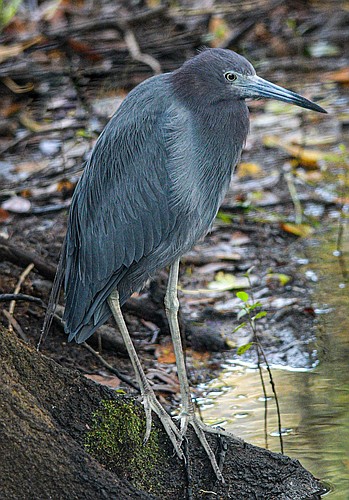- July 4, 2025
-
-
Loading

Loading

With a slate-gray body and a solitary, low-profile foraging style, little blue herons are fairly inconspicuous But look carefully and you might spot these beautiful birds stealthily walking along the edges of marshes in freshwater wetlands and coastal islands. Not overly energetic, little blues patiently and deliberately stalk their prey. With a flexible diet, they'll forage for fish, amphibians and crustaceans. They also eat aquatic insects and spiders and even grassland insects, when wetlands become dry.
Unlike other dark herons, little blue herons start life completely white. This allows them to go incognito while feeding next to the similarly sized and shaped (but much more active) snowy egrets, who are fairly intolerant of mature little blue herons. In addition to protection from predators, the egrets' more active feeding style also offers superior foraging opportunities for young little blue herons that would otherwise likely have a tougher time surviving their first year. To spot immature little blues among snowy egrets, examine the birds' foraging style. Or, simply look at their legs. Snowy egrets have yellow feet and black legs whereas immature little blue herons have dull greenish feet and legs.
Unlike the white, ornate plumes of snowy and great egrets, blue feathers were not in demand for the plume trade at the turn of the 20th century, which likely saved little blue herons from extinction. However, their numbers in Florida have declined, as result of loss of wetlands caused by development, exposure to pesticides and human disruption of their nesting grounds, and they are now a state-designated threatened species.
Save our Seabirds is a non-profit organization whose mission is to rescue and rehabilitate
sick and injured birds, releasing as many as they can, while educating our community about avoiding injuries and preserving habitats.